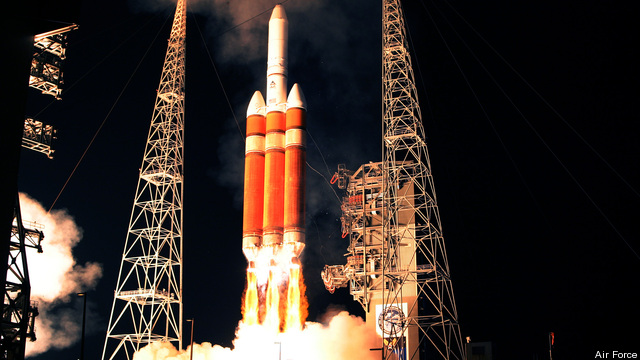
OSD recently appointed a new acting deputy assistant Secretary of Defense for space policy, and, assuming he keeps the job beyond January, he (or his replacement) might consider shifting his attention to some of the very difficult challenges facing space programs in the Defense Department.
First among those would be efforts to build military space systems that better serve the joint fight. We have long known that our dependence on space ensures that adversaries will try to negate its advantages. Russia and China have been exploring various ways to do so, and India has announced that it, too, perhaps for other reasons, is interested in developing anti-satellite capabilities. Making sure that military missions depending on space will be assured is one of the loud imperatives in the current US National Space Policy.
The more important question is what those missions might be–what is it that space systems should do in the emerging joint fight? To date, answers have nearly always taken the form of incremental enhancements to legacy systems. But for many of those legacy systems, military users were secondary customers, and users received space-based data in ways far removed from today’s “publish and subscribe” aspirations. Today’s technology, including work developing cyber capabilities and joint information environment architectures, both admits and demands the inclusion of planning for new space systems as part of joint force development activities.
The space industrial base presents a second hugely complicated tangle of challenges. Budget forecasts today seem sure to bring turbulence reminiscent of the early-to-mid-1990s, with companies divesting, consolidating, disinvesting, and ex-patriating. The turbulence will prompt the urge to devise industrial policies to keep the industrial base healthy and competitive and capable of doing more with less. And then will come the frustrations of finding once again that the Defense Department has great difficulty understanding the companies on which it depends and is a remarkably unsuccessful venture capitalist. Remember the Flat Panel Display Initiative? Or the promise of launching at marginal cost using the Evolved Expendable Launch Vehicle?
A third source of policy challenges is the independence of the government’s four sectors of space activities — defense, intelligence, civil, and commercial. It would seem reasonable to expect that these sectors could find ways to manage in common activities that are common to each. Launch and test facilities, solid rocket motors, guidance systems, communications systems, on-orbit propulsion and energy supply, selected research and development topics–common programs might in principle reduce unit costs and allow some companies to grow enough to compete effectively for international business. But there is no agreement even among the Defense Department users on space launch base and range modernization. The Air Force and the NRO have difficulty coordinating launch support. NASA and the Defense Department have trouble agreeing on how many heavy launchers might be needed in the next 10 years. And on and on. The recognition of such diversity, in fact, was the principal reason that the current administration declined to formulate a national space strategy.
These are truly hard problems. Work on them cannot be easy, but it will surely make more headway if the salient deficiencies of the past couple of years are reversed. Do analysis before — not after — announcing new policies. Make sure that executive responsibilities for implementing new policies are assigned and accepted before announcing them in the press. And do try to coordinate with other parts of the Defense Department before coordinating on interagency and national position papers. An awful lot depends on military space.
Bob Butterworth, a member of the AOL Board of Contributors, is a consultant and expert on intelligence, especially spy satellites and the policies governing them. He is former senior advisor to the leader of Space Command.
In a ‘world first,’ DARPA project demonstrates AI dogfighting in real jet
“The potential for machine learning in aviation, whether military or civil, is enormous,” said Air Force Col. James Valpiani. “And these fundamental questions of how do we do it, how do we do it safely, how do we train them, are the questions that we are trying to get after.”


























